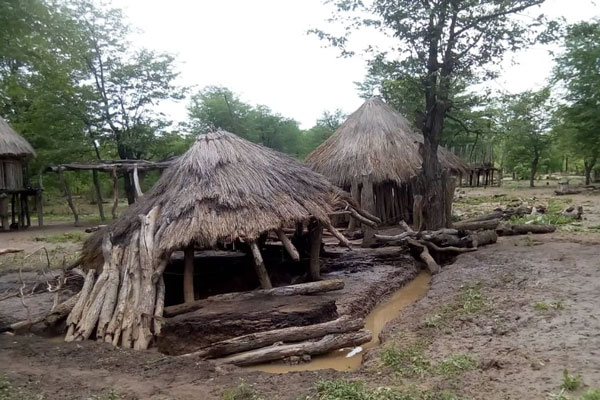

Environment By Kennedy Nyavaya
The roaring noise of heavy trucks and buses passing through Chipinge’s Ndiyadzo village still scares Jonas Vaisa (68), who is often reminded of Cyclone Idai that struck his community and other surrounding areas in March last year.
The ferocious currents, now deemed one of the most destructive Indian Ocean cyclones on record, were responsible for taking hundreds of lives and wiping out assets worth millions of dollars.
“We are facing challenges because our minds and hearts are not settled. Vehicles and machinery fixing infrastructure vibrates, so most times we are reminded of the cyclone and we are in constant fear,” said Vaisa.
According to Vaisa, this perpetual fear is because, apart from not getting prior warning of Cyclone Idai, they have also not received any explanation on how or where so much water came from and if it will come back again.
“We have got a lot of unanswered questions and now with other religious people saying that a lot of water is coming like last season, we do not know what will happen to us,” he said.
His story rings true for many villagers who have been struggling to understand where and how such powerful currents that “rearranged” their surroundings came from.
Such mythical theories and beliefs flying around are what the government, in addition to giving information about climate change and possible recurrence of extreme weather conditions, should seek to demystify.
- Chamisa under fire over US$120K donation
- Mavhunga puts DeMbare into Chibuku quarterfinals
- Pension funds bet on Cabora Bassa oilfields
- Councils defy govt fire tender directive
Keep Reading
Adding to the chaos is the public distrust of the Meteorological Service Department (MSD) whose forecasts pertaining to imminent floods are sometimes dismissed owing to countless inaccurate predictions in the past.
Speaking to the media during a tour of Cycole Idai-affected areas and assessment of reconstruction efforts last September, Chipinge assistant district administrator Salani Chamunorwa admitted that government had been caught unaware resulting in losses that could have been avoided.
“When Cyclone Idai came, we had not capacitated our people at the bottom so it’s better to do so now such that when tragedy strikes they can even take action on their own,” said Chamunorwa, who added that some people had been washed away in ill-advised attempts to help others.
“We want to cascade down to village level teaching people what to do if any disaster comes so that they react better rather than waiting helplessly on government to come and rescue them.”
With changes in climate fast taking place, scientific projections suggest that there is need to be ready for more similar natural disasters and Zimbabwe will need to invest more in risk management to reduce citizens’ harm and loss.
This rainy season alone there have been floods in parts of Manicaland province, Hwange and, more recently, Binga in what proves that there could become a more frequent phenomenon in the future.
In most of the mentioned situations, people have been displaced, lost valuable belongings, got injured and in worst cases died.
With such a reality stalking the nation, the government’s Civil Protection Unit (CPU) should be working overtime to sensitise citizens before, during and after such disasters, but it has mostly been found wanting.
One wonders if the department is even aware that watching as disasters destroy more than they could have due to laxity in executing their duties is a negation of their mandate.
In essence the CPU’s mandate involves disaster risk reduction for sustainability, developing preparedness plans, ensuring the attainment of optimal capacity for disaster risk management and mitigation against trans-boundary disasters, among others.
“…to design early warning mechanisms at all levels… promote indigenous knowledge systems and documentation of same for posterity and ensuring communities are equipped with basic knowledge and skills to manage prevailing hazards…” reads part of the list on their website.
However, they are seemingly failing in both preparing for disasters and reducing the impact after they happen.
This has to be addressed as it has led to more adversities like hunger and poverty which worsen some deplorable situations caused by natural disasters.
“Persons living in poverty face compounding vulnerabilities to climate change impacts because they lack the resources to quickly recover from its effects,” the United Nations Environment Programme said in a recent statement responding to East Africa’s desert locust crisis.
This should be a wake-up call to government and its departments that prevention is indeed better than cure, hence they should sensitise and protect citizens more in the wake of successive disasters caused by climate change.











